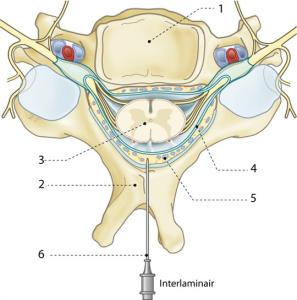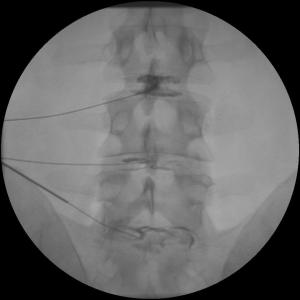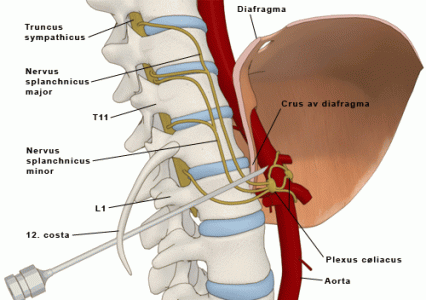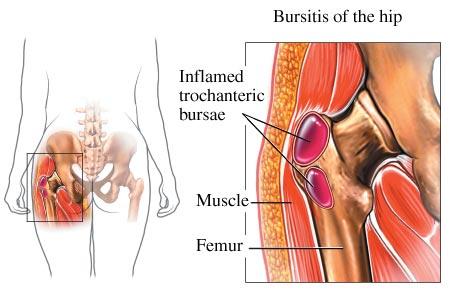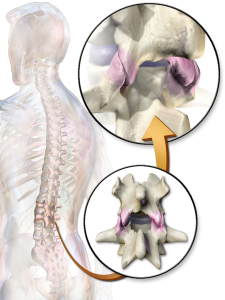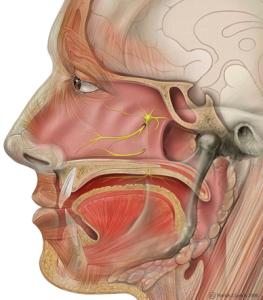Trigeminal Ganglion / Gasserian Ganglion
It is a small collection of nerve cells and fibers located at the base of the skull. The Gasserian ganglion is found inside the skull next to the brainstem (Fig.1 # 1) and has three nerve branches known as the Trigeminal Nerves. These three branches (Fig.1 #2, 3 and 4) are responsible for sensation on one side of the face. These branches, mainly the mandibular V3 (fig. 1 # 4), are related to Trigeminal Neuralgia (aka Tic Douloureux)
What is a Gasserian Ganglion Block?
A ganglion is a bundle of interconnected nerves that are important for pain sensation in certain areas of the body. One such ganglion is the Gasserian ganglion or trigeminal ganglion - this ganglion is important in the treatment of some types of facial pain. It is possible to relieve pain by blocking the Gasserian ganglion.
Block: A Gasserian ganglion block is a short, minimally invasive procedure that is done using local anesthetic (+/- Steroids) to inhibit the signals going through those nerves and control the facial pain. It is effective in treating trigeminal neuralgia facial pain. Also it is considered a diagnostic procedure to the condition.
RFA: With successful pain control after the block, longer term pain relief can be achieved in some conditions by doing what so called RadioFrequency Ablation to the same nerve fibers. It is an electrical current produced by radiowave is used to heat up a small area of nerve tissue, resulting in decreasing pain signals to the brain. Only the thin nerves in this ganglion are blocked. Since the thick nerves of the ganglion are not blocked, the remaining function of the ganglion remains intact. This Gasserian ganglion block is also known as the Sweet procedure.
When do I need Trigeminal Ganglion Block/ RFA?
Patients with classical facial pain, also named Trigeminal Neuralgia, are the ones who will benefit the most from the procedure.
Also patients with post herpetic Neuralgia of the face can benefit from this procedure.
Neuralgia is a sharp, electrical, shooting pain, that follows the path of a nerve and is due to irritation or damage to the nerve. The two most common forms of neuralgia are post-herpetic neuralgia and trigeminal neuralgia.
RF Therapy for Trigeminal & Post Herpetic Neuralgia
The type of RFA used to treat these painful neuralgia conditions is called Pulsed radiofrequency (RF) therapy that works by lesioning sensory nerves carrying the pain signals, interrupting those signals from reaching the brain. In general, radiofrequency therapy utilizes heat to interrupt nerve transmission with results lasting an average of 6-9 months.
What is different between Pulsed RFA compared to the RFA used for facet joints pain?
Pulsed radiofrequency follows the same concept, but the difference is that it heats at a lower temperature for a longer period of time - three minutes.
Pulsed radiofrequency ablation is preferable when sensitive body structures are located near the area of target.
Pulsed RF uses radiofrequency current in short, high voltage bursts.
Lesioning area created using the pulsed (RFA) is generally bigger given the lower temperature and longer time period employed.
Same concept, pulsed RFA also used in other conditions for Sphenoplalatine Ganglion, Intercostal nerves, Ilioinguinal nerve, and complex regional pain syndrome/reflex sympathetic dystrophy.
How is Pulsed Radiofrequency is done?
It is done under x-ray (fluoroscopic) guidance, special needles are placed near the anatomical locations of the nerves to be targeted. When the needles are in place, electrodes are inserted through them and electrical testing is performed.
The positioning of the needle is tested to confirm two things, that the needle is close enough to the targeted sensory nerve. The other thing is to test that the electrodes affect any motor nerve supply to in the area. Motor nerve lesioning potentially can affect motor function of this nerve, that is why the confirmation of the needle positioning is crucial in this procedure.
Once correct positioning is confirmed, pulsed RF lesioning is initiated.
What are the Expected Results of RF Therapy?
Right after the procedure, you might experience some discomfort at the area due to the needle placement, but it usually subside in few days.
The majority of patients experience a significant decrease in their symptoms for up to 12 months, though some patients experience longer or shorter duration of benefit.
What are dangers and side effects of a Trigeminal Ganglion Block/ RFA?
With experienced hands, this procedure can be done safely with great outcomes. In general the risks associated are infection, bleeding, or nerve damage.




